#kenning
Text
need him so bad
1K notes
·
View notes
Text
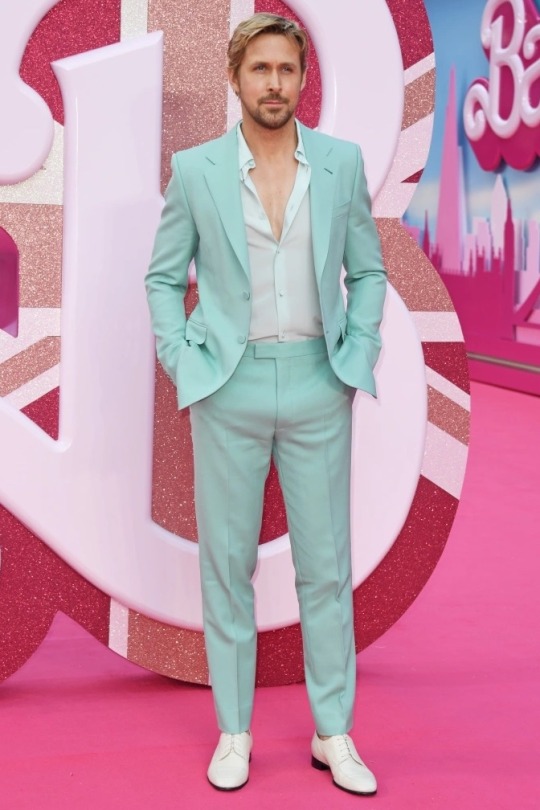

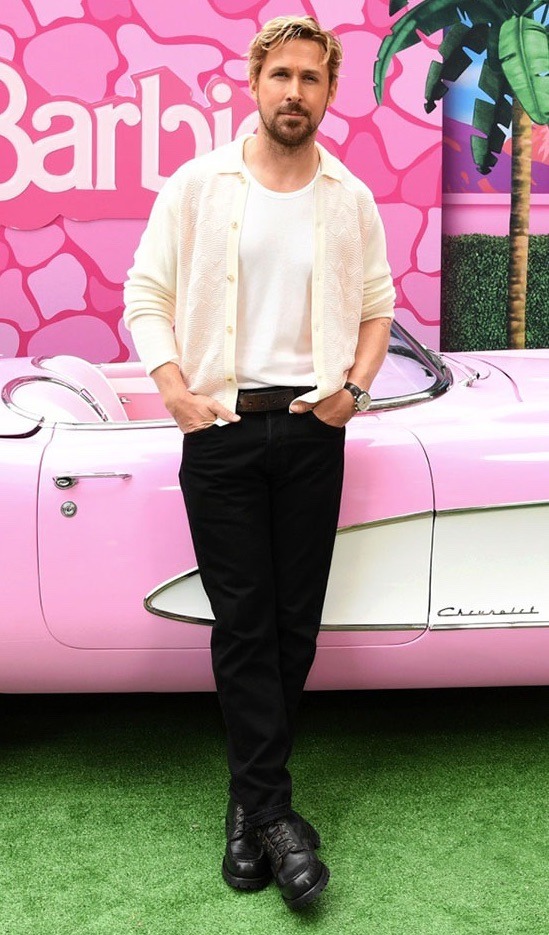



ok WHO is picking these outfits .. they need a fucking promotion
83 notes
·
View notes
Text

tumblr considers Swede part of Barbie Movie LOL GOOD FOR HER
21 notes
·
View notes
Text
The real purpose of the Barbie movie was to make people want to buy Ken.
19 notes
·
View notes
Note
I hate to do this to you but it’s fragility not virgility in I’m Just Ken 😂

Going through the five stages of grief right now because this is probably the worst crime someone could ever commit and I guess I'm not kenough.
I will edit the post, bless you anon. I think my brain made up a word this entire time lmfao.
2 notes
·
View notes
Text

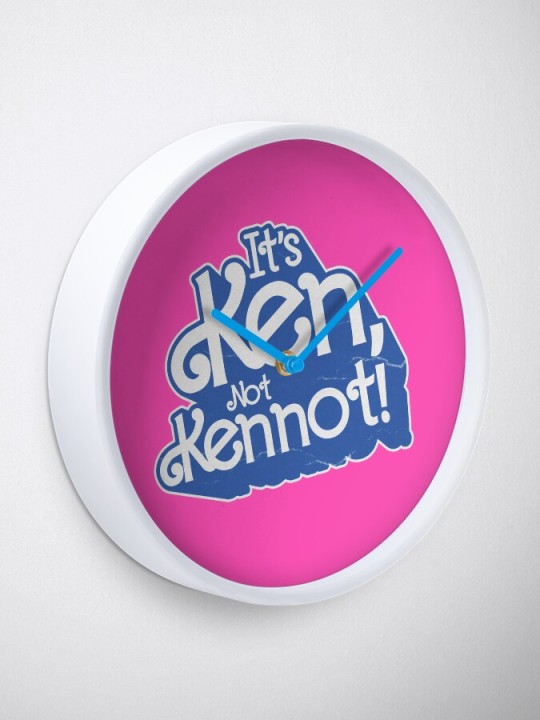

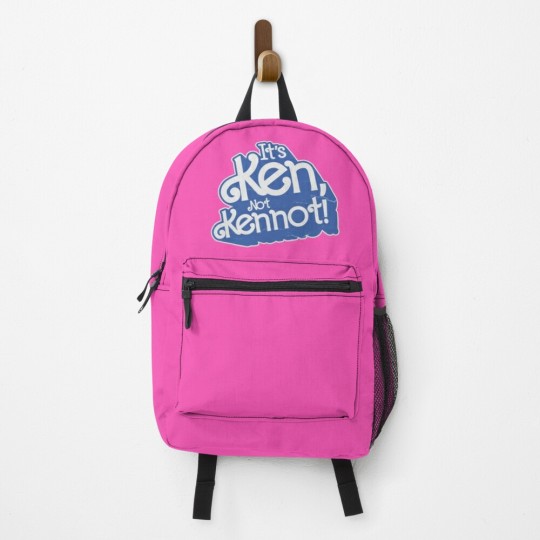
Ken or Kennot, there is no try!
"It's Ken, not Kennot!" Design now up in my shop!
#kenning#i am kenough#you are kenough#kenough#kenergy#barbie#the barbie movie#barbie movie#ryan gosling#margot robbie#greta gerwig#shirts#cool shirts#coolshirtz#shirts that go hard#kennot#ken#movies#memes#designs#graphic design#redbubble
4 notes
·
View notes
Text
Scandinavia - Old Norse Poetry - Structure and advice on writing imitations
(Some of this will be copy-pasted from my previous post on Old Norse literature and oral tradition)
OLD NORSE POETIC FORMS
Old Norse poetry utilizes a modified form of alliterative verse. In simpler terms, the metrical structure is not necessarily based on the last syllables of a line or phrase rhyming...
Ex: (lines from William Shakespeare’s Venus and Adonis) “And so in spite of death thou dost survive / In that thy likeness still is left alive”
... the structure relies on the repetition of multiple initial consonants in a line or phrase.
Ex: (from the Hávamál of the Codex Regius) Deyr fé // deyja frændr
SKALDIC POETRY
Primarily documented in sagas, skaldic poetry is usually about history, particularly the celebrated actions of kings, jarls, and some heroes. It typically includes little dialogue and recounted battles in dialogue. It has more complex styles, especially using dróttkvætt and many kennings.
DRÓTTKVÆTT (“courtly metre”)
- Adds internal rhymes and assonance (repetition of both consonants AND vowels) beyond the normal alliterative verse
- The stanza had 8 lines, each line usually having 3 lifts (heavily stressed syllables) and almost always 6 syllables
- The stress patterns tends to be trochaic (stressed, unstressed), with at least the last 2 syllables of a line being a trochee (usually...)
- In odd-numbered lines (first line, third line, etc.): 2 of the stressed syllables alliterate with one another; two of the stressed syllables share partial rhyme of consonants with dissimilar vowels (ex: hat and bet; touching and orchard)
- In even-numbered lines (second line, fourth line, etc.): the first stressed syllable must alliterate with the alliterative stressed syllables of the previous line (an odd-numbered line); two of the stressed syllables rhyme (ex: hat and cat; torching and orchard)
These requirements are SO difficult that oftentimes poets would mash together two separate lines of writing in order to meet the structure. It’s really hard to explain, so read the wikipedia link here for more info.
KENNINGS
Kennings are figures of speech strongly associated with Old Norse-Icelandic and Old English poetry. It is a “type of circumlocution, a compound employs figurative language in place of a more concrete single-word noun” (source).
Now, when I first read that, I had zero clue what the hell that meant. But this is my current understanding: a poetic device where you dance around using a single noun by describing it with other words. It is similar to the poetic device of parallelism.
- “bane of wood” = fire (Old Norse kenning)
- “sleep of the sword” = death (Old English kenning)
- Drahtesel = “wire-donkey” = bicycle (modern German kenning)
- Stubentiger = “parlour-tiger” = house cat (modern German kenning)
- Genesis 49:11 “blood of grapes” = wine
- Job 15:14 “born of woman” = man
A beautiful resource for translated kennings is this article here from the HuffPost’s Harold Anthony Lloyd.
SIMPLE KENNINGS
Simple kennings would be used in both Eddic and Skaldic poetry.
The usual forms are a genitive phrase (ex: the wave’s horse = ship) or a compound word (sea-steed = ship). There is usually a base-word and a determinant.
The determinant may be a noun used uninflected as the first element in a compound word, with the base-word being the second element of the compound word.
OR the determinant may be a noun in the genitive case placed before or after the base-word, either directly or separated from the base-word by intervening words. The base-words in the above examples are “horse” and “steed”, while the determinants are “waves” and “sea”.
The unstated noun which the kenning refers to is called its “referent”, in the example a bit above: ship.
COMPLEX KENNINGS
More complex kennings are really only used in skaldic poetry.
In these, the determinant and sometimes the base-word are themselves made up of kennings. A matryoshka doll of kennings, if you will.
Ex: “feeder of war-gull (bird)” = “feeder of raven” = “warrior” (referring to how warriors kill people and leave their corpses for birds to eat)
The longest kenning in Skaldic poetry belongs to Þórðr Sjáreksson’s Hafgerðinga where he writes “fire-brandisher of blizzard of ogress of protection-moon of steed of boat-shed”, which means “warrior” (source).
EDDIC POETRY
Eddic poetry is usually about mythology, ethics, and heroes, and is narrative (where both the narrator and the characters are speaking). They use simpler structures, like fornyrðislag, ljóðaháttr, and málaháttr, and use kennings more sparingly.
FORNYRÐISLAG (”old story metre”)
- Each line tends to be a whole phrase or sentence (or end-stopped), where a sentence won’t “run over” and onto the next line (or enjambment).
Ex: End-stopped, from William Shakespeare’s Romeo and Juliet “A glooming peace this morning with it brings. / The sun for sorrow will not show his head.”
Ex: Enjambed, from T.S. Eliot’s The Waste Land “ Winter kept us warm, covering / Earth in forgetful snow, feeding / A little life with dried tubers.”
- Each verse is split into 2 to 8 (or more) stanzas.
Ex: from Waking of Angantyr (structure provided by wikipedia)

- There are 2 lifts per half line, usually with two or three unstressed syllables. At least 2 (but usually 3) lifts will alliterate, always including the main stave (the first life of the second half-line). This means there are usually between 4 and 5 syllables per half line, and therefore between 8 and 10 syllables per full line (but it can vary).
MÁLAHÁTTR (“conversational style”)
- Similar to fornyrðislag, but there are more syllables in a line.
- It adds an unstressed syllable to each half-line, making the typical 2-3 per half-line and 4-6 per line into 3-4 per half-line and upwards of 6 unstressed syllables per line
LJÓÐAHÁTTR (“song” or “ballad metre”)
- Usually made up of stanzas with four lines each
- Odd numbered lines were usually standard lines of alliterative verse with 4 lifts and 2 or 3 alliterations. It was cut in half with a “cæsura” or “//”, which indicates the end of one phrase and the beginning of another.
- Even numbered lines had 3 lifts and 2 alliterations, with no cæsura.
Ex: from Freyr’s lament in Skírnismál (structure provided by wikipedia)

WRITING IMITATION
When writing an imitation of Eddic and Skaldic poetry, there are many workarounds if you don’t want to jump through these hoops.
Personally, I am putting forward my imitation as a “translation” of an Old Norse text so I don’t need as much concern for alliteration, rhymes, and exact syllables.
But I enjoy having a similar feel to the original poems, so I do try to put in some alliteration for words that are of Norse/Germanic origin and keep a similar syllable count.
Posted: 2023 May 29
Edited last: 2023 May 30
Writing and research by: Rainy
2 notes
·
View notes
Text
"Structure
Old Norse kennings take the form of a genitive phrase (báru fákr "wave's horse" = "ship" (Þorbjörn Hornklofi: Glymdrápa 3)) or a compound word (gjálfr-marr "sea-steed" = "ship" (Anon.: Hervararkviða 27)). The simplest kennings consist of a base-word (Icelandic stofnorð, German Grundwort) and a determinant (Icelandic kenniorð, German Bestimmung) which qualifies, or modifies, the meaning of the base-word. The determinant may be a noun used uninflected as the first element in a compound word, with the base-word constituting the second element of the compound word. Alternatively the determinant may be a noun in the genitive case placed before or after the base-word, either directly or separated from the base-word by intervening words.[2]
Thus the base-words in these examples are fákr "horse" and marr "steed", the determinants báru "waves" and gjálfr "sea". The unstated noun which the kenning refers to is called its referent, in this case: skip "ship".
In Old Norse poetry, either component of a kenning (base-word, determinant or both) could consist of an ordinary noun or a heiti "poetic synonym". In the above examples, fákr and marr are distinctively poetic lexemes; the normal word for "horse" in Old Norse prose is hestr.
Complex kennings
The skalds also employed complex kennings in which the determinant, or sometimes the base-word, is itself made up of a further kenning: grennir gunn-más "feeder of war-gull" = "feeder of raven" = "warrior" (Þorbjörn Hornklofi: Glymdrápa 6); eyðendr arnar hungrs "destroyers of eagle's hunger" = "feeders of eagle" = "warrior" (Þorbjörn Þakkaskáld: Erlingsdrápa 1) (referring to carrion birds scavenging after a battle). Where one kenning is embedded in another like this, the whole figure is said to be tvíkent "doubly determined, twice modified".[3]
Frequently, where the determinant is itself a kenning, the base-word of the kenning that makes up the determinant is attached uninflected to the front of the base-word of the whole kenning to form a compound word: mög-fellandi mellu "son-slayer of giantess" = "slayer of sons of giantess" = "slayer of giants" = "the god Thor" (Steinunn Refsdóttir: Lausavísa 2).
If the figure comprises more than three elements, it is said to be rekit "extended".[3] Kennings of up to seven elements are recorded in skaldic verse.[4] Snorri himself characterises five-element kennings as an acceptable license but cautions against more extreme constructions: Níunda er þat at reka til hinnar fimtu kenningar, er ór ættum er ef lengra er rekit; en þótt þat finnisk í fornskálda verka, þá látum vér þat nú ónýtt. "The ninth [license] is extending a kenning to the fifth determinant, but it is out of proportion if it is extended further. Even if it can be found in the works of ancient poets, we no longer tolerate it."[5] The longest kenning found in skaldic poetry occurs in Hafgerðingadrápa by Þórðr Sjáreksson and reads nausta blakks hlé-mána gífrs drífu gim-slöngvir "fire-brandisher of blizzard of ogress of protection-moon of steed of boat-shed", which simply means "warrior"."
2 notes
·
View notes
Text
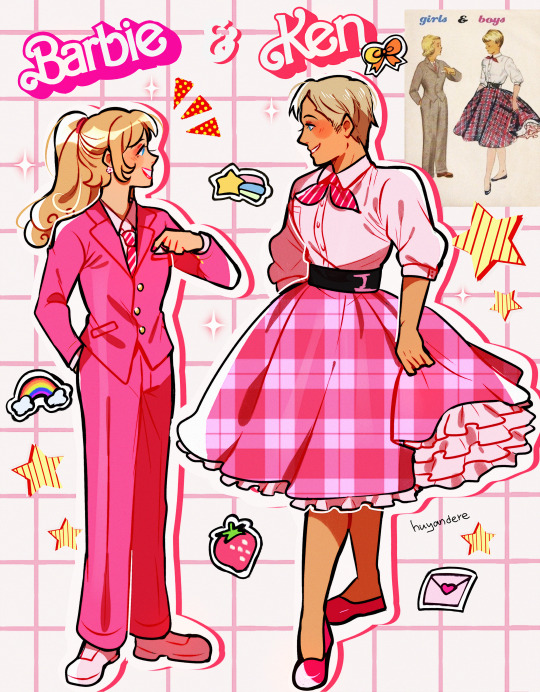
barbie day
126K notes
·
View notes
Text

☆ - ̗̀✨ He's just Ken ✨ ̖́- ☆
#barbie movie#the barbie movie#ryan gosling#barbie 2023#barbie#ken#barbie ken#my art#ANYWHERE ELSE... HE'D BE A TEN...
129K notes
·
View notes
Text
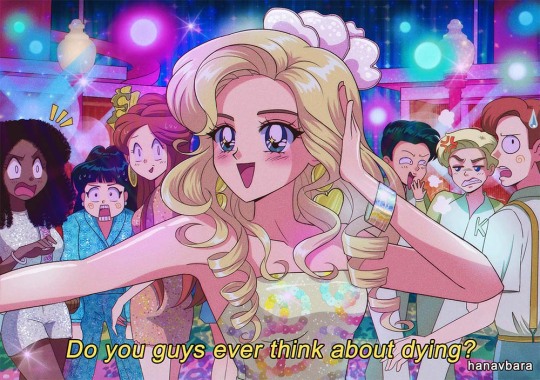
do you guys ever think about dying? ✨
95K notes
·
View notes
Text
The Barbie movie reminded me about how when I was little my parents were upset that I kept making my Barbie dolls kiss, so they bought me a Ken doll. The next day they found me having a funeral for poor Ken in the garden, he had died of tuberculosis. All the Barbies were in attendance and I buried him under our rose bush. The Barbies were too poor to afford a headstone (it was 1875) so I didn’t mark where the grave was and I never could find him again. He’s probably still there.
#barbie movie#barbie#feminism#ken#ken doll#i’m just ken#my writing#true story#ryan gosling#barbie dolls#greta gerwig#margot robbie#oppenheimer#barbenheimer#if you ever find a Ken doll wrapped in toilet paper that’s mine sorry
81K notes
·
View notes
Text

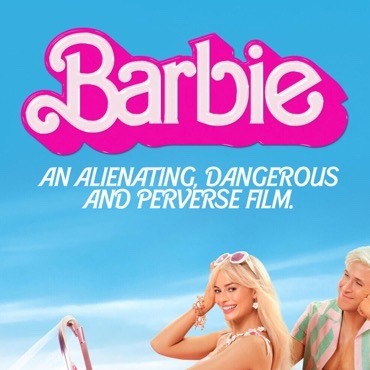

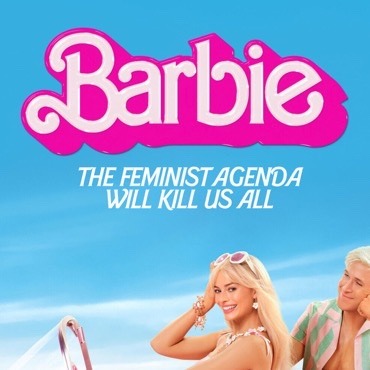

this fucks
#i wish i could turn off the replies of this post now 😭#men are so insecure#you��d think barbie herself called to kill all the kens#barbie movie#barbie#barbie review#1k#10k#20k#30k#40k#50k#60k#70k#80k
85K notes
·
View notes
Text

I’d lose interest if I found out it wasn’t about horses too
#barbie#barbie 2023#barbie movie#barbie spoilers#ryan gosling#ken barbie#gotta love a horsegirl ken#pizzee’s comedy tour
80K notes
·
View notes
Text
the barbenheimer experience i had was so funny i saw oppenheimer first and in a quiet scene we could literally hear ken singing in the theater next to us and then during barbie it when was quiet we could hear a fucking explosion coming from the oppenheimer screening
#literally everyone in the theater started laughing both times#barbenheimer#oppenheimer#barbie#ken#greta gerwig#christopher nolan#cillian murphy#margot robbie#rhis was the only time i was glad my local theater is a shithole#normally it’s so annoying hearing the show next to you#but this time it was hilarious
87K notes
·
View notes
Text
It’s important to recognise that Barbie (2023) criticises both the patriarchy AND the matriarchy. Yes, the Ken’s are just accessories to the Barbies. Yes, they don’t have any say in the government they live under. That’s the point, you’re supposed to feel awful, you’re supposed to want the Kens to have their own agency, you’re supposed to want equality. The Barbie movie explicitly states that the way Barbie treats Ken is wrong, so much so that once he finds a safe space for his masculinity and individual identity he’s so excited to share it with the other Kens.
But they go overboard and replace a matriarchy with a patriarchy and now the same issue exists but in reverse. That’s the POINT!! THATS THE POINT!!! Barbie is not anti-men it’s pro equality PLEASE understand this
13th Aug 2023 UPDATE:
Heeeeey howdy!!
Due to the IMMENSE comments and discussion on this post (thanks ya’ll!!) I’ve decided to update my post with my recent opinions and hopefully clearer explanations!!
First, my original post only considers a very small and very vague analysis of the film!!
Since making this I've read all your comments and learned quite a bit about the matriarchy as it appears in human civilisation. Originally, I was pitting the patriarchy and the matriarchy against each other as though the results of their implementation were equal in the film.
They were not!! Below is the definition of matriarchy I’ll be working off of.
Matriarchy Simple Definition;
Matriarchy is a social system in which women hold the primary power positions in roles of authority. In a broader sense it can also extend to moral authority, social privilege and control of property.
There's a lot to talk about in the Barbie film that would fit better in an essay, so I'll try and condense it into this;
To me, Barbie (2023) is a film about the female experience and the shared connection between women that persists through childhood and adulthood, support and harassment, suffering and joy, mother and daughter.
It uses Barbie as its figurehead because of the immense societal and political impact the doll has had on women, both good and bad (as explained in the film).
The male experience as seen in Barbie (2023) is not the sole focus of the film- rather, it's an accessory (as the Kens are) to Barbie's story, and a necessary aspect of exploration to truly highlight the importance of individualism and healthy personal exploration.
I want to make clear that I in no way think the treatment of the Kens was just as bad as the treatment of the Barbies. I also still agree that the matriarchy fostered by the Barbies wasn’t good for the Kens.
Additionally, I’m aware that this take on Barbie (2023) works strictly within the assumed heteronormative boundaries of gender. There is a lot of nuance in the Barbie film and I don’t think everything can be covered or explained in on Tumblr post— but I hope this clarification helps!!
I hope you're all coming to your own conclusions and analysis of the film in a way that makes sense to you. And for those of you engaging in online conversations and discourse about it, I hope you're keeping yourself and others happy and safe!!!
Much love to you all!! < 3
#barbie#barbie movie#barbenheimer#Ken#barbie spoilers#barbie discourse#barbie conversations#barbie criticism#barbie 2023#barbie movie 2023#matriarchy#patriarchy#heteronormative society
65K notes
·
View notes